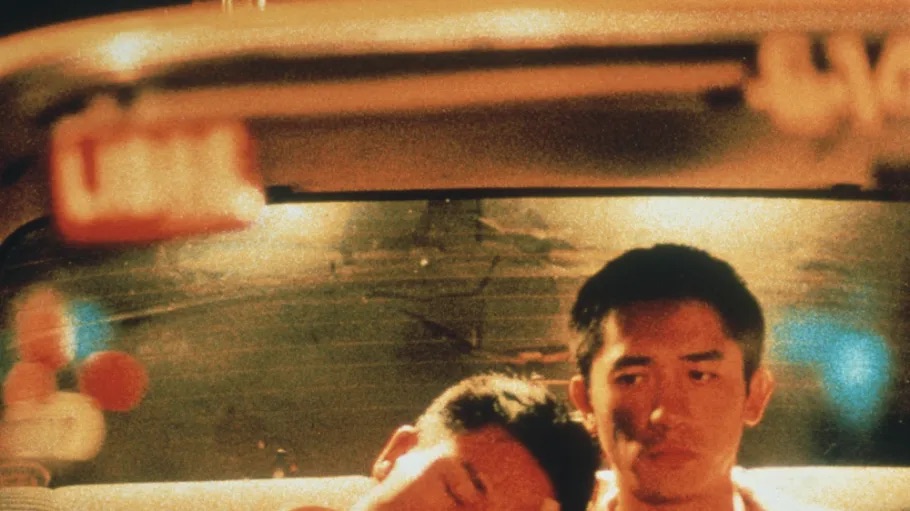This film has turned out to be one of the more interesting ones we have viewed in class in terms of road-trip films. This is one of the films that I would truly characterize as a road trip film, as the road trip itself is the key driver of the plot and is seen as a character itself. Each member of the group has their journey both, literal and metaphorical, they go on as a result of the constant movement seen throughout the film. This film dives into a variety of ideas such as the intersection between gender, sexuality, and acceptance during a journey across Australia which is why I would characterize it as a queer road trip film.
The first area I would like to explore more is the idea of giving the means of travel a name. By naming the bus, Priscilla, it makes it almost human and involved more so in the journey. This separates The Adventures of Priscilla, Queen of the Desert from other films we have watched as this creates another element of the story and theme. For example, when the bus is defaced by homophobic graffiti, just as the characters have been, it gives an overarching look at the hate that our main characters have faced and involves this inanimate character in this as well. I found this particularly interesting because it gives Priscilla, the bus, a more human experience, as well as represents the collective journey and struggle of the group. By having the means of transport be an essential character of the plot it emphasizes the role of the road trip on the narrative journey. One of the more thought-provoking scenes is when the bus breaks down and Adam re-paints the bus. This is a representation of how marginalized groups deal with hate, especially anti-trans and homophobic hate. Repainting the bus, or fixing Priscilla, is the same as how the characters patch themselves or each other up when faced with external hate. It is an act of resilience and empowerment for the group. The mode of travel serves as a greater representation of each character’s journey and story. The scene with Adam, when he repaints, is another instance in the film where the bus is more than a mode of transport, but rather is a pivotal character and an essential part of the theme of the film.
The major themes of the film of gender, sexuality, and acceptance are what allows the film to be characterized as queer in the sense of a queer road-trip film. For example, Anthony, Tick, is battling with the idea of acceptance. During this journey, we find out that they not only had not divorced his wife but also had an eight-year-old son whom they had not seen in years. Tick appears to be fearful that their son would not be accepting of his performing in drag and the character’s sexuality as a whole. Which also appears to be a fear that Tick is not accepting of their own identity. This inner struggle is slowly learned and battled in the group’s journey across the outback, making the road trip a key driver of this theme. Annamarie Jagose talks about this, as they believe that the questioning of identity can unintentionally be homophobic (Jagose, 1996). By having Tick struggling with the acceptance of their child, the character is creating a homophobic space internally. Which, thus creates a more unstable identity of oneself.
One of my favorite moments from the film was when they climbed King’s Canyon in full drag. This is a pinnacle for the film and the journey as a whole. In this scene, the characters are all embracing their true identities and unapologetically asserting their presence in a non-accepting space. The physical hike of King’s Canyon is challenging in full drag, which is representative of the character’s strength and adaptability seen throughout the whole journey. The obstacles of the hike are a representation of the difficulties, both external and internal, that the characters have faced throughout their journey. The characters face this challenge as an act of resistance and empowerment. On this journey, they have faced a variety of challenges, but have battled through them all and remain together. Each character has had their own internal and external growth, which feels as if it is coming full circle in this scene.
The Adventures of Priscilla, Queen of the Desert uses a road trip across the Australian outback to tell a story of the personal challenge and development of a variety of characters. The journey itself becomes a character with the director’s choice of naming the bus. The bus itself faces adversity and hate on this journey, as a representation of the overarching collective difficulties of the group. I found this film to be interesting with a unique perspective and was easily labeled as a Queer Road Trip Film.
Bibliography:
Elliot, Stephan, et al. Adventures of Priscilla, Queen of the Desert. PolyGram Video, 1997.
Jagose, Annamarie (1996). Queer theory. Carlton South, Vic.: Melbourne University Press.

Leave a Reply